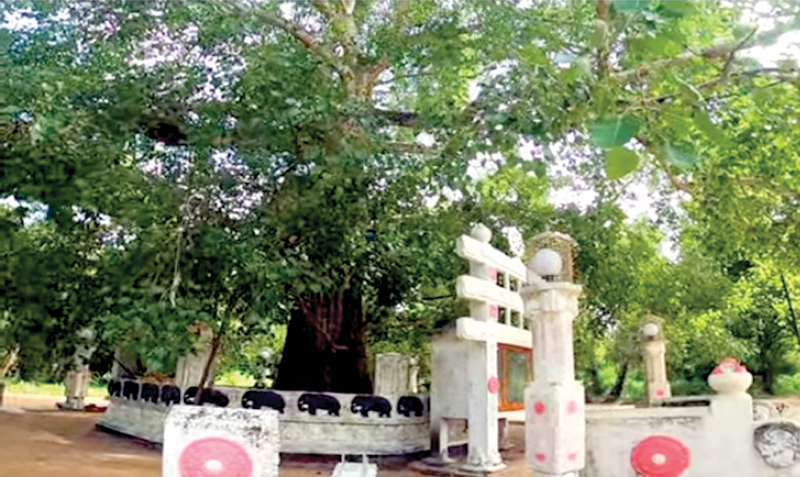It is a commonplace fact that Puttalam is a district where historical evidence and factors pertaining to Sri Lanka’s human history, i.e. its early human settlements can be seen in abundance.
It is widely believed that Prince Vijaya landed on the West coast near Puttalam; several historically significant places associated with the life of Kuveni can be seen in and around Anamaduwa; the country’s longest rock inscription is in Thonigala; the hideout of Prince Saliya, the only son of king Dutugemunu and his bride Ashokamala is at Wilandagoda in Karuwalagaswewa. The deposit of limestone of the Miocene Epoch is also at Eluvankulama in the Puttalam District.
Sacred relics
The country’s one and only lotus-shaped stupa (padmakara) in which the gold sword used by king Dutugemunu in his final battle against his rival king Elara has been buried is in the Nandimithra Nawawangu Rajamaha Vihara in Pallama about 23 kilometres away from Chilaw. Some sacred relics of the Buddha are also believed to have been kept inside this tumble down pagoda which is now on the verge of destruction. Reconstruction work on this stupa is believed to have been started one day after the commencement of the reconstruction work on the Ruwanweliseya in Anuradhapura. According to ancient chronicles and legends, this temple was built by Nandimithra, one of the ten warrior giants of King Dutugemunu’s army.
Legend has it that the stupa was built by warrior giant Nandimithra in the shape of a lotus flower with nine petals to commemorate the triumph over Elara and the other giant warriors who joined him in the war victory. The terrace of the stupa has been built in the shape of a nonagon with nine edges symbolising his warrior giant comrades.
Nandimithra made these nine edges in memory of the nine warriors in king Dutugemunu’s army. Consequently, the name Nawawangu Rajamaha Vihara has come into being. It is said that the gold chains attached to the Royal Tusker Kadol after winning the war are hidden beneath the ground somewhere in this place of worship.
There are many historically important and archaeologically priceless ruins and artefacts all over the 40-acre land which currently belongs to the temple.
They speak volumes about the histry and grandeur of the temple, which dates back to the reign of King Dutugemunu (from 161 BC to 137 BC).
Stone pillars
Some of them are stone pillars of ancient buildings, faded guard stones, a moonstone, a flower altar, Buddha statues, one of which is kept in the National Museum, and some agricultural implements such as a mammoty, several axes and some nails found under the bed of the nearby wewa known as Pallama Wewa also built by Nandimithra.
They are said to belong to king Dutugemunu’s era. Seven ponds that never dry up are in the temple premises.










